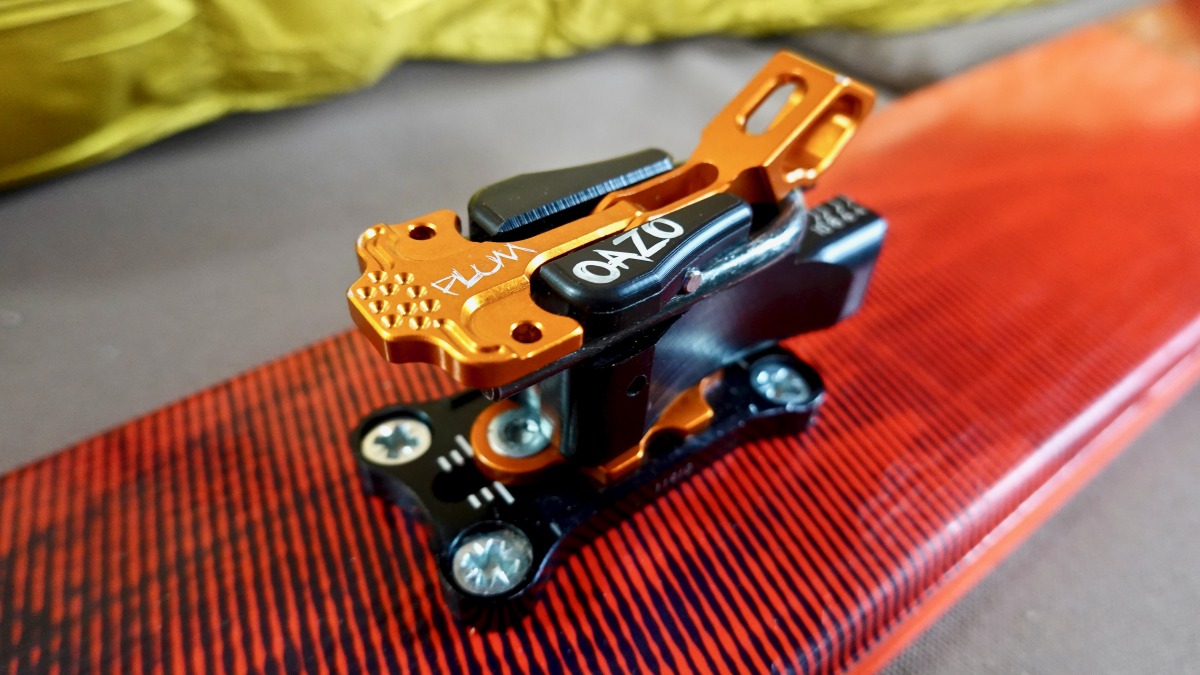
Plum Oazo — a beautiful work of machinemanship and a solid lightweight binding option
I recently made a pass by the Dawson residence, aka WildSnow HQ, and took a peek at Lou’s 90+ piece touring binding collection. While the early AT renditions are cool and novel for the time, there is quite the jump from the pre Fritz Barthel era into Fritz’s early stuff, before he turned it loose to Dynafit. Since then the improvements to AT bindings, maybe call them refinements, have been slow and steady with many of them focused on the heavier, freeride end of things. Fritz launched us so close to the ceiling of innovation, that this inverse exponential growth is about all we have before we bump our heads. Or break through it? Over the spring skiing season, I’ll take a look at a couple of those bindings on the lighter side nearing that ceiling, from the insides all the way to performance. First up: the Plum Oazo 8.
On the snow
Coming in at 200g, the Plum Oazo is a very clean and simple unit. I mounted them to a fresh pair of planks and hit the snow early this month just as high pressure and increased snow stability graced the Colorado Rockies. I have a general practice of putting on a leash and skiing the resort groomers hard, along with a few bumps, for my first trial run on a new backcountry setup. It’s a good test, as the g-forces created while cranking laid out Super G turns are hard to duplicate in the backcountry, even in funky snow in steep terrain. The Oazo kept me clamped in while pushing the light setup in its unintended environment. I generally run 11-12 DIN release value and therefore put the lateral RV to the max of 10 on the Oazo 8, then reduced it just a quarter turn. Forward release is fixed at 8, hence the name, with a steel U spring.
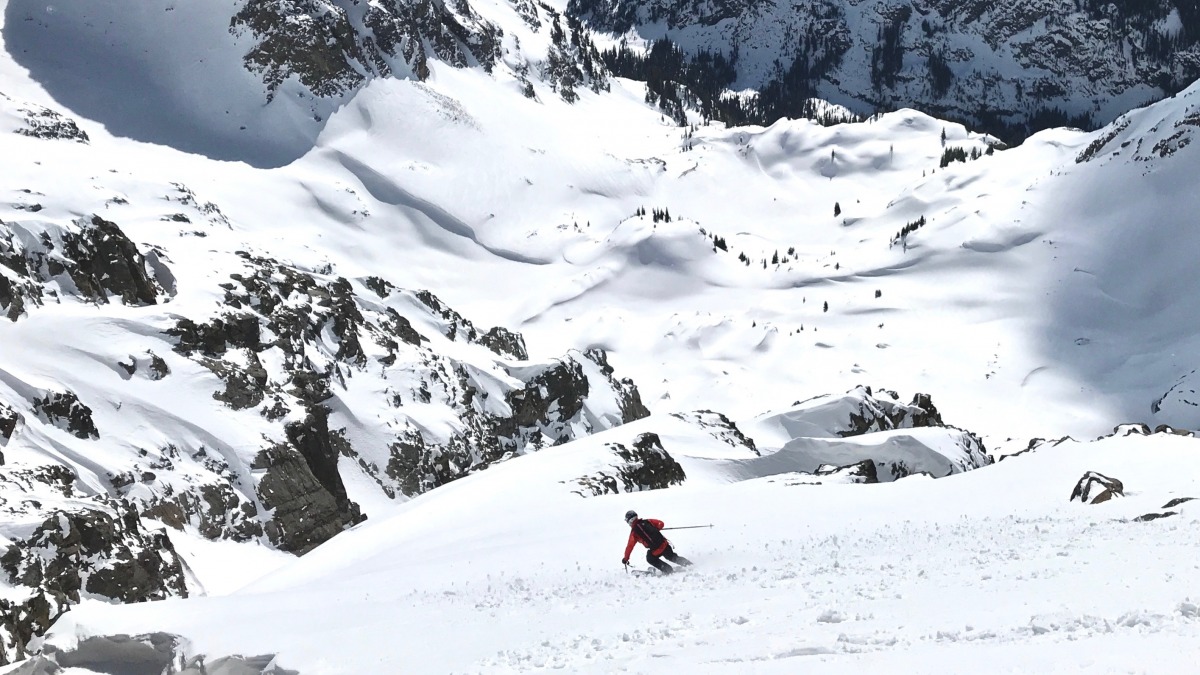
Faith in the sturdy Oazo retention powers gained from a day ripping groomers. Skiing aggressively in steep alpine terrain.
Notable features
Time to ski tour. The most noticeable thing about the Oazo is the myriad of riser heights. The Oazo is designed to run primarily in “race-style” — pins forward with a flap for 40mm of heel rise off the ski, then a bonus riser to 56mm. The Oazo also offers a zero rise position (boot lands 8mm off the ski on the adjustment plate for a 0 degree ramp angle) when twisted laterally in either direction. A flat option is a must for me, especially for bigger missions, when long flat entries or skinning egresses toast the lower back and quads in a lifted position. I would prefer the flat mode accessible in the same position as risers, but the ability to turn either way with a quick blind reach back isn’t too bad.
The binder locks into a fourth position — pins rearward, though Plum claims that it is not designed to do so. This gives you three riser positions within one setting for those that like to fine tune throughout the climb– 35mm, 51mm and again topping out at 56mm. In total, that gives you a whopping six different riser positions, with five available heights. Five of them are within 21mm, which at my 297mm bsl equates to roughly 6-11 degrees.
The Oazo’s toe unit is burlier than some competitors in this class. Combining a beefy tech toe with a light heel unit has been a common, though expensive, practice amongst weight conscious ski mountaineers. Plum saw the demand here does this for us, as they also do in their R150/170 clamps.
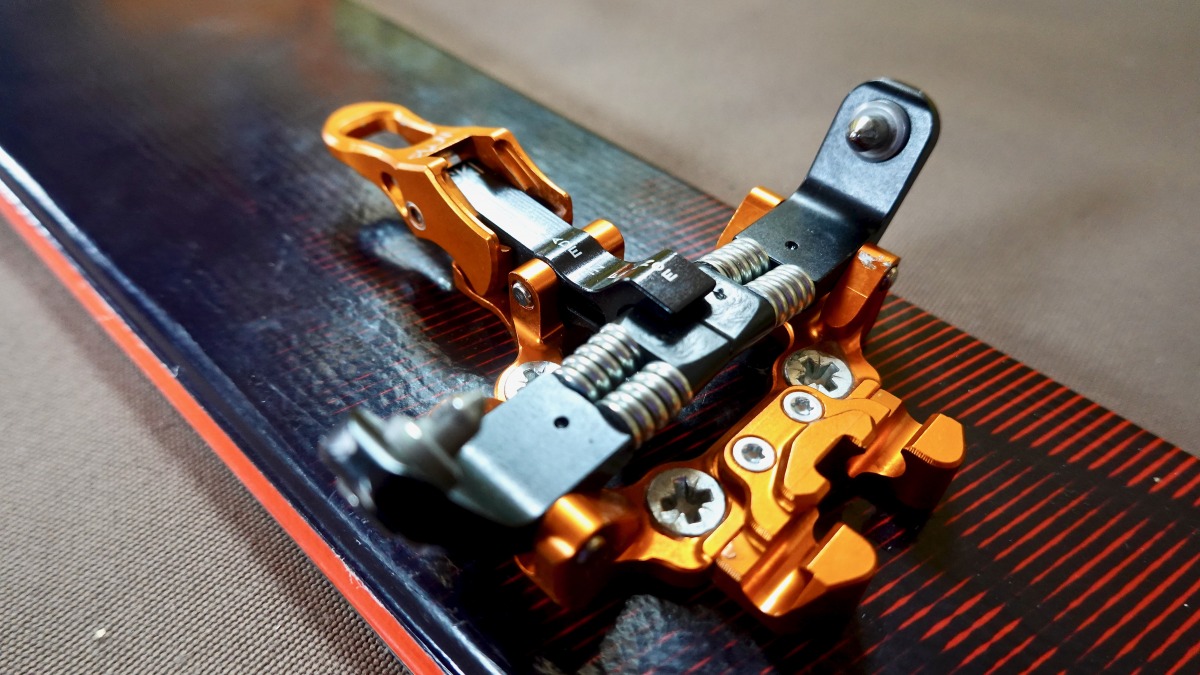
The simple and strong toe unit offers a very positive and reassuring clunk upon step in.
Plum’s ski crampon system is the best in the industry, offering a lightweight, simple, and solid connection. No wonder why it’s been copied by at least one other major brand. Drop the crampons in at a 90 degree angle and off you go. The crampon receptacle, weighing 10g, is removable for the gram (all 10 of them) counters.
Taking an internal look
After five successful times out on the Oazo, I was ready to write this review and took apart the heel unit to investigate this elegant machinery. The general design is similar to any tech binding that rotates into positions. The housing is CNC’d from a single piece of high durometer polymer that rotates around a monoblock 7075 aluminum tower. A spring that defines the lateral release value presses another small object into machined depressions in said tower. The Plum differs from other designs in that the spring drives a ball into sockets in the tower instead of a flat piece into flat sections. In theory, you get a more positive contact point in each position without a more difficult rotation. In practice, I do find each position to be very well mechanically defined. Spring tension is adjusted by a threaded cap and a single pin holds the housing to the tower. Another pin holds the two riser flaps and U spring in place. Only ten pieces in total, 9 of them metal, for a well featured and light heel unit.
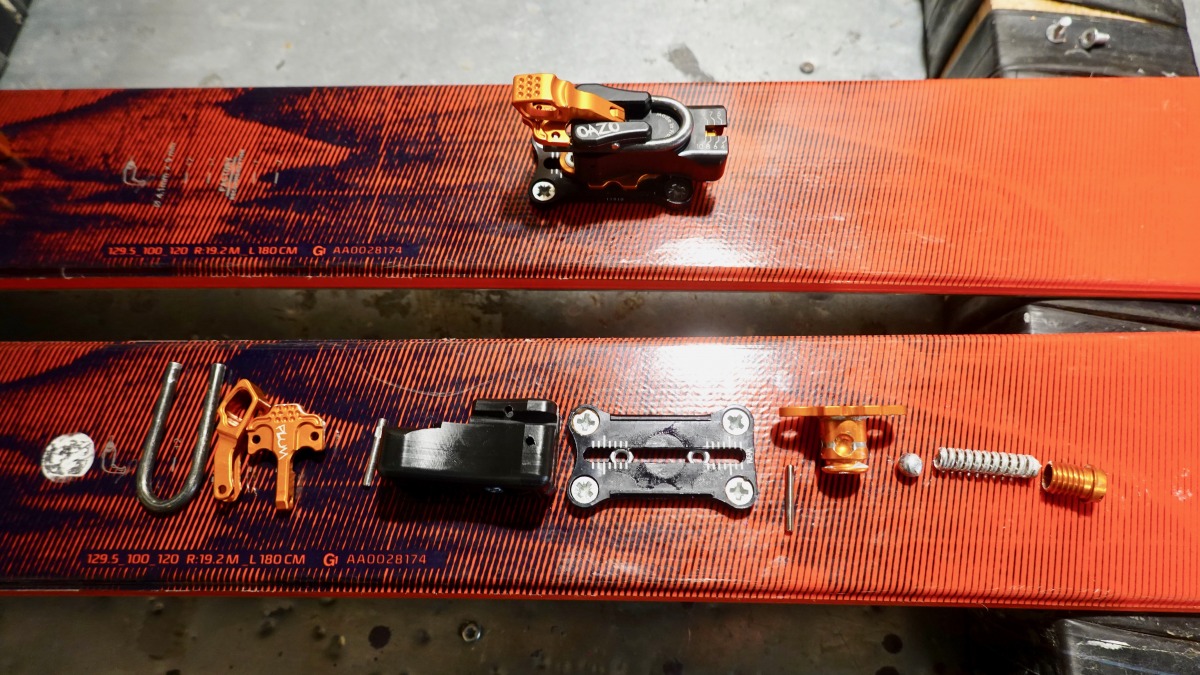
“Exploded view” of the Oazo heel unit. Simplicity and mostly metal, great things in a light touring binding.
Upon investigation, I noticed that the ball had carved a slight indentation in the tower around its orbit. I reached out to Plum’s engineering team and received this reassurance that Lou and I both agree with:
From what we can see on the picture there is no abnormal wear on the tower. The movement/glide of the ball bearing (especially if the lateral adjustment is pretty high) removes the anodization by friction when switching the heel block to flat position. The release values are not deteriorated because the wear is insignificant in comparison with the depth of the ball compartment, which manages the lateral release (with the spring). This modification of the aspect of the tower happens during the first handlings and will slightly evolve afterwards.
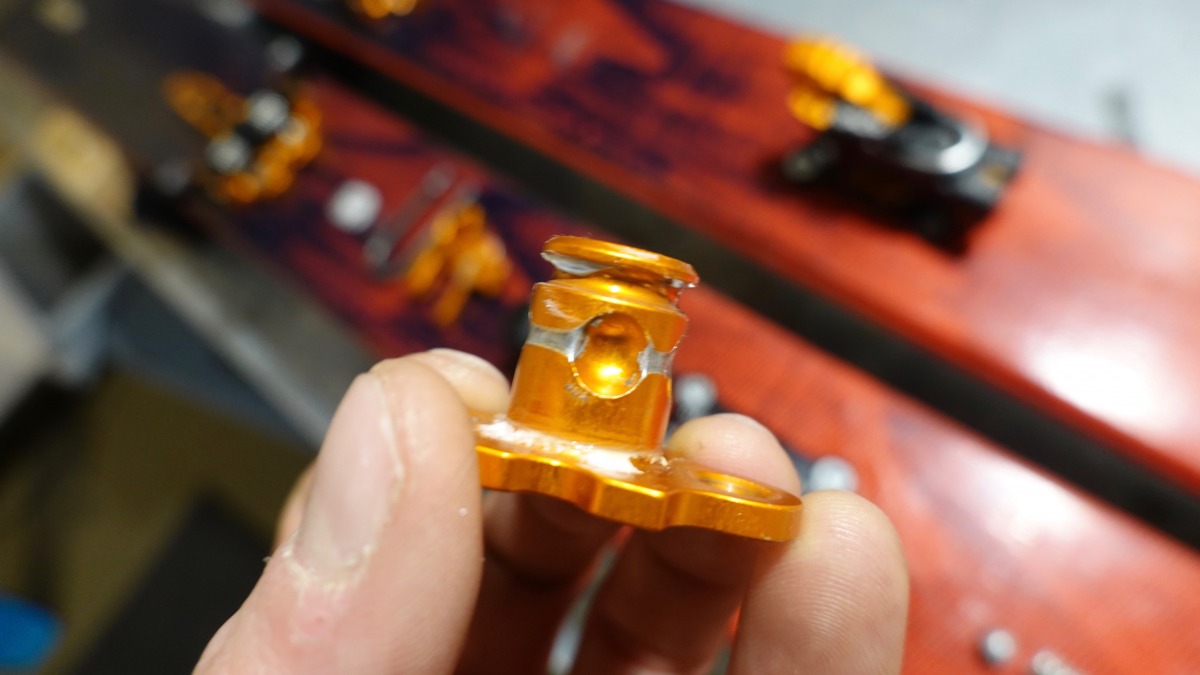
The break-in of the Oazo tower
As with any metal to metal contact, there is a break-in period. Consider an internal combustion engine that has not had a factory break-in. A quicker oil change is recommended at first as the metal wears into its long term position. I cleaned the grease dirtied by ultra fine aluminum particulate and re-lubed with flouropolymer bicycle parts grease. I think this is a fine trade off to have a mostly metal and adjustable (and serviceable) heel unit.
A single slot heel-unit plate with two screws gives you 20mm of boot sole adjustment. Lateral slop or roll from this linear two-screw design is prevented with two wings jutting out from the tower base. Wings can be seen in the lead photo above.
Plum has created a tidy and sharp little unit in the Oazo within my favorite binding class– 200 gram units with a bit of adjustability and riser options which can be skied hard. I’m using this weight class on almost all of my skis.
They’re a nicely made, simple and functional binding, but not the beginning of a new era as happened so many years ago with Fritz. So for now, Lou won’t be expanding his binding collection from his front entry into his living room. He told me that’s probably best for a happy home, then in the same sentence asked me when I’d be done with the Oazos.
Check our other WildSnow Plum coverage and shop for the Plum Oazo 8.
On March 22nd 2021, Gary Smith tragically died in an avalanche outside of Beaver Creek Resort in Colorado. Since 2018, Gary has been a frequent and insightful contributor to WildSnow. From Christmas Eve spent at the Wildsnow Field HQ cabin, to testing gear and sharing his love for steep skiing around the world, he was a pillar of the ski touring community and will be greatly missed.
